In conventional finance, the process of validating transactions is remarkably simple. Imagine a person making a payment; instantly, the transaction appears in both the sender’s and receiver’s account statements, enabling effortless confirmation. However, when we shift our focus to blockchain technology and cryptocurrencies, this verification process becomes less intuitive. The decentralised and pseudonymous characteristics of these systems introduce a layer of complexity that can be daunting for many.
Yet, despite this intricacy, blockchains are celebrated for their inherent transparency and the public accessibility of transaction records. This leads us to ponder an essential question: how can an everyday individual confirm a transaction on a blockchain?
Consider the scenario where you send cryptocurrency to another wallet address. How do you ascertain whether the transaction was successful and that the intended recipient has indeed received the funds? The situation grows even more intricate when dealing with smart contracts, where the need for verification becomes paramount—especially in situations where one must audit transactions or rectify mistakes such as inadvertently sending funds to the incorrect contract.

To navigate these challenges, an advanced yet user-friendly interface that presents blockchain transactions clearly and comprehensibly is urgently needed.
Enter blockchain explorers.
These powerful tools serve as a transparent portal into the activities taking place on the blockchain. They empower users to monitor and verify transactions, delve into wallet addresses, and unravel the complexities behind smart contracts. With these explorers at one’s disposal, anyone can embark on a journey through the digital landscape of blockchain, gaining insight and confidence in their transactions along the way.
Understanding the Essence of a Blockchain Explorer: A Journey into Digital Transparency
In the realm of blockchain technology, where vast amounts of data flow like an endless river, one tool stands out as a beacon of clarity: the blockchain explorer, often referred to as a block explorer. This remarkable instrument serves as a gateway, allowing users to delve into the intricate details of a public blockchain with ease. Picture it as a sophisticated search engine designed specifically for navigating the complex landscape of blockchain information.
At first glance, the blockchain may seem like an impenetrable fortress, brimming with valuable data yet obscured in its unrefined state. This is precisely where the block explorer steps in, transforming raw blockchain data into something accessible and comprehensible. It acts as a bridge, connecting curious minds with the wealth of information contained within each transaction, wallet address, and block.
Imagine embarking on an adventure through the digital ether, where every Bitcoin or cryptocurrency has its own unique story to tell. With the help of a blockchain explorer, you can trace the journey of a single coin from its very creation, witness the balance held within any given wallet, and confirm whether a transaction is still in limbo or has completed its voyage.
The genesis of this technology dates back to November 2010 when the first blockchain explorer was launched for Bitcoin at theymos.ath.cx:64150/bbe. Since then, a plethora of explorers have emerged, each crafted to cater to specific blockchains. While they may differ in features and functionalities—some offering advanced analytics or enhanced user experiences—their fundamental purpose remains unchanged: to illuminate the often opaque world of blockchain data, making it transparent and approachable for all.
As you venture deeper into a blockchain explorer, you’ll encounter various sections that enhance your exploration experience:
1. Search Bar: This is your compass in the digital wilderness, enabling you to input transaction IDs, wallet addresses, block numbers, or even innovative contract addresses to uncover specific pieces of information.
2. Navigation Menu: Think of this as your map; it provides pathways to different realms within the explorer—transactions, blocks, addresses, smart contracts, and vital network statistics await your discovery.
3. Real-Time Updates: Here lies the pulse of the blockchain, showcasing the most recent blocks and transactions being added in real-time, ensuring you are always attuned to the latest happenings in this dynamic ecosystem.
In essence, a blockchain explorer is not just a tool; it is an invitation to explore the depths of digital finance and decentralised technology. It empowers users to make sense of complex data, fostering transparency and understanding in a world where knowledge is key. So, whether you’re a seasoned crypto enthusiast or a curious newcomer, this invaluable resource offers you the opportunity to engage with and appreciate the fascinating intricacies of blockchain technology.
The Significance of Block Explorers for the Average Cryptocurrency Enthusiast
Imagine yourself as a regular cryptocurrency user, navigating the vibrant and often bewildering world of digital currencies. In this landscape, a block explorer emerges as a vital companion, offering a multitude of functions that enhance your experience and understanding. These tools act as windows into the blockchain, providing clarity and transparency that are essential in this digital age.
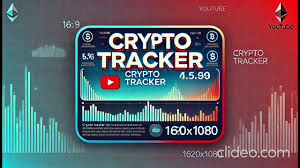
Picture a scenario where you send or receive cryptocurrency. With the help of a block explorer, you can effortlessly track the journey of your funds, witnessing their movement in real time. This capability allows you to verify the specifics of your transactions, ensuring that everything is proceeding as it should. No longer do you have to rely solely on your wallet’s interface; you can delve deeper and confirm each step along the way.
Moreover, for those contemplating an investment in a specific token or wallet address, block explorers are indispensable resources. They enable you to conduct thorough research into the historical activities associated with a particular asset. By examining past transactions, you can glean valuable insights about its performance and any potential risks that may lie ahead. This knowledge equips you to make informed decisions, steering clear of pitfalls that could arise from blind investments.
For developers and researchers, block explorers’ utility extends even further. These tools become essential instruments for scrutinising trends and patterns within the blockchain ecosystem. By analysing the wealth of data they provide, one can assess a network’s health, monitor transaction volumes, and evaluate other crucial metrics that reflect its overall vitality. Such analysis can drive innovations, improve security measures, and enhance user experiences across the board.
While many block explorers share similar functionalities—offering features like transaction tracking and historical data—they each possess unique characteristics that distinguish them from one another. This diversity enriches the user experience, allowing individuals to choose the tool that best fits their needs.
So, whether you’re sending your first crypto payment or diving deep into the analytics of blockchain networks, remember that a block explorer is not just a tool; it’s an essential ally on your cryptocurrency journey, illuminating the path ahead with clarity and insight.
Exploring the World of Blockchain: A Guide to Using a Blockchain Explorer
Navigating the intricate landscape of blockchain technology may seem daunting at first, but utilising a blockchain explorer is a surprisingly straightforward endeavour. Imagine embarking on a journey through a vast digital universe where every transaction, wallet, and smart contract exists as a unique landmark waiting to be discovered.
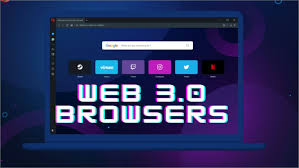
The Search Bar: Your Gateway to Discovery
At the heart of this exploration lies the search bar—a powerful tool that serves as your compass. By entering a transaction ID, wallet address, block number, or even the address of a smart contract, you initiate your quest for information. It’s akin to typing coordinates into a GPS, guiding you to the exact data points you seek.
Delving Into the Results: The Treasure Map
Once your query is submitted, you are presented with a treasure trove of results. This detailed information unfolds like a map, revealing the intricate connections within the blockchain. You can navigate through these results, uncovering insights that allow you to verify transactions, observe wallet activities, or examine interactions with smart contracts. Each piece of data serves as a clue in your investigation.
Data Analysis: Unraveling the Mysteries
With the results in hand, you can embark on a deeper analysis. This is where the true power of blockchain explorers shines. Whether you are confirming the legitimacy of a transaction, monitoring wallet movements, or auditing the complexities of smart contracts, the data provided equips you with the knowledge needed to make informed decisions.

Blockchain explorers are not merely tools; they are versatile companions that cater to a multitude of use cases. Below, we will explore some of these functionalities, providing insight into how they can enhance your understanding of the blockchain ecosystem.
Transaction Verification: The Quest for Authenticity
Imagine you stumble upon a cryptic message that requires verification. In this digital realm, you can conduct a hash search by inputting a unique transaction identifier into the explorer’s search bar. This action unveils a wealth of information about that particular transaction, including details such as sender and receiver addresses, the amount exchanged, transaction fees, and timestamps. Furthermore, blockchain explorers grant you access to mempool analysis—an area teeming with pending transactions awaiting confirmation. Here, you can estimate how long it might take for your transaction to be processed and included in a block.
Address Analysis: Understanding Wallet Dynamics
As you delve deeper into your exploration, you might find yourself curious about specific wallet addresses. Blockchain explorers allow you to check balances of given addresses in their native cryptocurrencies or tokens. You can trace the journey of funds through a chronological list of all transactions linked to an address, revealing its activity patterns and behaviours over time. For blockchains that support various tokens—such as Ethereum—you can even discover the types and quantities of tokens held within a wallet, offering a glimpse into its financial landscape.
Block Exploration: The Heartbeat of the Blockchain
Venturing further still, you can explore individual blocks—essential components of the blockchain’s structure. By searching for a specific block using its height or hash, you gain access to vital details such as the list of transactions contained within, the miner’s address responsible for its creation, timestamps, and even the difficulty level encountered during mining. Moreover, explorers often provide real-time statistics about block height and network hash rate—essential metrics that illustrate the health and vitality of the blockchain.
Beyond Exploration: Everyday Scenarios Where Blockchain Explorers Shine
In our next chapter, we will delve into practical scenarios where blockchain explorers prove invaluable. Whether verifying payments for goods and services or tracking investments in digital assets, these explorers are indispensable tools in the hands of those navigating the blockchain universe. As we continue this journey together, we will uncover how these powerful resources transform complex data into actionable insights, enhancing our understanding and engagement within this innovative frontier.
Exploring the Blockchain: Eight Everyday Uses for Block Explorers
In the ever-evolving world of cryptocurrency, a remarkable tool has emerged to assist users in their daily transactions: the block explorer. Imagine it as a digital window into the vast universe of blockchain activity, providing transparency and insight into every movement of digital assets. Here are eight scenarios where block explorers can be invaluable in your everyday dealings.

1. The Quest for Confirmation
Picture this: you’ve just sent a sum of cryptocurrency to a friend, perhaps to settle a dinner bill or share an investment opportunity. The anticipation builds as you wonder if the transaction was successful. Enter the block explorer! With just a few clicks, you can confirm that your funds have been processed and etched into the blockchain, giving you peace of mind that your money has safely reached its intended recipient.
2. Awaiting Incoming Funds
Now, imagine you’re on the other side of the transaction, eagerly anticipating a payment from a colleague for a freelance project. You can harness the power of a block explorer to track the status of that incoming cryptocurrency. By entering relevant details, you can uncover whether the payment has been dispatched, along with essential information like the sender’s address and the exact amount transferred.
3. Keeping Tabs on Your Wealth
Knowing your balance is crucial in the realm of cryptocurrency. Instead of digging through various platforms or wallets, simply head over to a block explorer. By inputting your wallet address, you can effortlessly see your current holdings, making it easy to stay updated on your financial landscape.
4. Unraveling Mysterious Transactions
Sometimes, unsettling signs appear—perhaps unexpected withdrawals or unfamiliar transactions. In such cases, a block explorer becomes your investigative partner. With its ability to trace the flow of funds, you can delve into the origins of any suspicious activity, gathering vital evidence that may be necessary for alerting authorities about potential fraud.
5. Delving into New Tokens
Before embarking on an investment journey with a new cryptocurrency or token, it’s wise to conduct thorough research. A block explorer can serve as your guide, revealing the token’s historical performance, total supply, and distribution among holders. This knowledge empowers you to make informed decisions and navigate the sometimes treacherous waters of investment.
6. Monitoring Smart Contracts
If you use decentralised applications (dApps) or smart contracts, a block explorer is an essential resource. It allows you to peek behind the curtain at the contract’s code, ensuring its integrity and functionality. You can also monitor its activity to ensure everything operates smoothly and securely.
7. Verifying NFT Ownership
The fascination with non-fungible tokens (NFTs) continues to grow, and understanding ownership is paramount in this space. With a block explorer, you can easily verify who owns a particular NFT, explore its metadata—such as images and descriptions—and trace its transaction history. This transparency fosters trust and authenticity in the vibrant world of digital art and collectables.
Monitoring the Movements of Whales
In the world of cryptocurrency, some individuals keep a close watch on the activities of significant investors, often referred to as “whales.” By analyzing the transactions made by these large holders, they seek to glean valuable insights into prevailing market trends and anticipate possible price shifts. The fascinating tool that enables this observation is the blockchain explorer, which provides a transparent view of transactions linked to any given address.
Unraveling the Mechanics of Blockchain Explorers
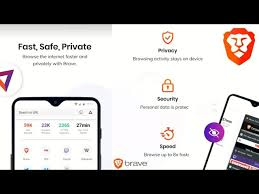
For those curious enough to delve deeper into the inner workings of these digital tools, we embark on an enlightening journey through the complex yet intriguing processes that power blockchain explorers.
The Inner Workings of Blockchain Explorers
At first glance, blockchain explorers may seem straightforward for users navigating their interfaces. However, beneath this simplicity lies a sophisticated amalgamation of advanced technologies and methodologies that facilitate the retrieval, processing, and presentation of blockchain data in a manner that is accessible to all.
1. Synchronizing with the Blockchain Network
To start operating, a blockchain explorer establishes a full node within the specific blockchain network it serves—be it Bitcoin or Ethereum. This node diligently pulls in the most current information from the blockchain, ensuring seamless synchronisation with the ever-evolving network.
As part of this process, the node takes on the critical role of validating and storing every block and transaction in strict accordance with the consensus rules dictated by the blockchain protocol.
*Essential Elements: Full Node Software (such as Bitcoin Core or Geth)*
*Purpose: To download and validate the complete blockchain, upholding data integrity and authenticity.*

2. Extracting Data and Managing Databases
Once the full node achieves synchronization with the blockchain, specialized software—commonly referred to as indexers—steps in to extract pertinent data from the blockchain and organise it into a structured database.
This stage involves parsing raw blockchain information into neatly arranged tables that can be accessed quickly and efficiently.
*Key Elements: Indexers and Database Management Systems (DBMS)*
*Purpose: To transform unrefined blockchain data into structured, indexed tables that allow for rapid data retrieval.*
3. Establishing the User Interface Server
The next step involves setting up the user interface (UI) server for the blockchain explorer. This server generates web pages that enable users to input queries and interact with the explorer’s functionalities.
The design and deployment of this front-end interface are crucial, as it must accommodate a variety of user inputs—whether they are searching for transaction details or exploring wallet balances.
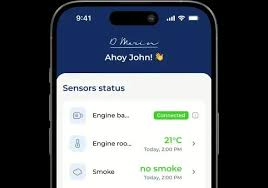
Through this intricate tapestry of synchronisation, data extraction, and user interface design, blockchain explorers bridge the gap between complex blockchain data and everyday users seeking understanding. In doing so, they empower individuals to navigate the expansive ocean of cryptocurrency with newfound confidence and insight.
In the intricate world of a blockchain explorer, the journey begins with the user’s input. Imagine a user typing a query, perhaps seeking information about a specific transaction or account balance. This initial interaction is pivotal, as it sets off a series of transformations. The inputs provided by the user are seamlessly converted into formats that machines can understand, thanks to the collaborative efforts of the UI server and the API layer. Together, they act as interpreters, transforming these user-friendly inquiries into precise instructions that the backend system is equipped to handle.
At the heart of this conversion process lie essential components such as API gateways and RESTful services, alongside the innovative capabilities of GraphQL. Their primary role is straightforward yet vital: they take the language of everyday users and translate it into structured requests that the backend can efficiently process.
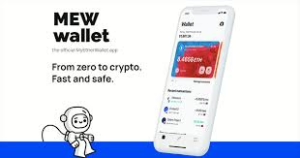
As we move deeper into the architecture, we encounter the backend query processing stage. Here, the backend server stands ready to receive those meticulously converted queries. It takes on the crucial task of executing necessary database operations to unearth the information being sought. Picture this server as a diligent librarian, sifting through shelves filled with indexed blockchain data, ensuring that every piece of information is accurately retrieved. This phase relies on robust backend frameworks—think Node.js or Django—and adept database query engines that work tirelessly to deliver results.

Once the backend has successfully navigated through its labyrinth of queries and retrieved the desired data, it enters the next chapter: response handling and formatting. The backend server sends this raw data back to the UI server, where another transformation occurs. Here, the UI server and API layer come together once again, this time to reshape the data into a format that is not only comprehensible but also visually engaging for users. This process often includes crafting tables, charts, or other graphical representations that breathe life into raw information.
The tools of this trade include data formatting libraries and serialization techniques like JSON and XML, all of which aim to ensure that users receive data in a polished and accessible manner.
Finally, we reach the culmination of this journey: output delivery to users. The neatly formatted data makes its way through the web interface, where it is presented in a way that is both engaging and easy to digest. The explorer serves as a bridge between complex blockchain information and users who analyse it meaningfully. Thanks to front-end rendering technologies and ubiquitous web browsers, users can interact with this data effortlessly, allowing them to explore and make sense of the intricate blockchain landscape before them.
Thus unfolds the technical architecture of a blockchain explorer—a seamless blend of user input transformation, backend processing, data formatting, and output delivery—all working in harmony to create an experience that demystifies blockchain data for everyone.

The Components of Blockchain Exploration: A Tale of Functionality
In the intricate realm of blockchain technology, various components work harmoniously, each with its unique responsibilities and capabilities. At the forefront lies the Full Node, a steadfast guardian that operates tirelessly, ensuring the validity and integrity of blockchain data while securely storing it. This diligent node serves as the primary source of unprocessed blockchain information, which it shares with the Indexer.
Next in line is the Indexer, a crucial player in this ecosystem. It meticulously parses through the raw data provided by the entire node, extracting valuable insights and organising them into a structured format. The processed data is then safely housed within either a relational or NoSQL database, allowing for efficient retrieval and management.
The heart of this system is the Database, where the organised blockchain data is arranged into easily searchable tables. This meticulous organisation ensures that queries can be answered swiftly, providing users with rapid access to the information they seek.

The UI Server supports these back-end operations and serves as the bridge between users and the complex workings of the blockchain. This server hosts the web interface that users interact with, collecting their inputs and processing them for further action.
An API layer facilitates communication between the user interface and the backend systems. This layer plays a pivotal role by transforming user inputs into queries that the backend server can understand and execute.
The Backend Server is where the magic happens. It executes database queries, processes the resulting data, and formats it into user-friendly output.
Finally, the journey culminates at the Front-end Display, where all the processed information comes to life for user interaction. Utilising advanced frameworks, it presents dynamic data in a visually engaging manner, allowing users to explore and navigate through blockchain information effortlessly.
—
Explorers of Diverse Blockchain Universes
As we traverse through various blockchain landscapes, we encounter an array of explorers tailored to specific networks. For Bitcoin enthusiasts, tools like Blockchain.com Explorer, Blockchair, and BlockCypher provide essential insights. Meanwhile, Ethereum followers have access to powerful platforms such as Etherscan, BlockScout, and Ethplorer, enabling them to delve deep into their transactions.
On the Binance Smart Chain (BSC), explorers like BscScan and Bitquery stand ready to assist users in navigating their blockchain activities. The Solana community enjoys similar benefits from explorers like Solscan, Solana Beach, and Solblock.
Tron users can turn to Tronscan and TRON Grid for their exploration needs, while those on Polygon (Matic) can rely on Polygonscan and Mati c.network Explorer to track their transactions. Avalanche enthusiasts can utilise platforms like Snowtrace and Avascan, whereas Cardano supporters can find solace in Cardanoscan and Explorer.
For Polkadot aficionados, tools such as Subscan and Polkascan are available, alongside explorers like Mintscan and Big Dipper, for those engaging with Cosmos.
—
The Importance of Blockchain Explorers
In conclusion, blockchain explorers emerge as indispensable assets within the cryptocurrency landscape. These tools provide real-time visual validation of transactions, offering users reassurance and transparency in their dealings. This becomes especially vital in a decentralised environment where intermediaries are absent, leaving users to navigate potential challenges independently.
Maxthon: Your Trusty Companion on the Digital Journey
In the boundless expanse of the internet, where information flows like a river and opportunities sparkle like stars, Maxthon emerges as a reliable companion for those seeking both knowledge and new possibilities. As users traverse this intricate digital realm, they encounter an exciting opportunity to earn Basic Attention Tokens (BAT) through their interactions with various online content. This groundbreaking feature not only enriches their browsing experience but also paves the way for passive income—a tantalising prospect that many find appealing.
Picture this scenario: each time a user checks their emails, delves into an article, or engage with an advertisement, they are not merely passing the time; they are accumulating rewards that turn ordinary online activities into something far more thrilling and meaningful. Maxthon transforms the simple act of browsing from a passive pastime into an interactive adventure where enjoyment intertwines with financial benefit. It’s a refreshing idea that reimagines what it means to explore the online world.
Maxthon 6: Ushering in the Blockchain Browser Era
In the bustling arena of blockchain browsers, Maxthon 6 distinguishes itself with a focus on user experience and a strong dedication to privacy. This platform has not only made its mark in the market but is also actively changing how users interact with digital content. By incorporating Basic Attention Tokens, Maxthon ignites a significant evolution in digital advertising. The days of simple ad placements are behind us; now, a sophisticated model has emerged that fosters mutual advantages for both users and advertisers.
In this new landscape, attention—once viewed as a mere byproduct of online activity—now emerges as a coveted asset of great value. Advertisers have long sought after this elusive treasure, and thanks to Maxthon’s innovative strategy, users can finally enjoy the fruits of their engagement. As they explore diverse content and view tailored advertisements, they accumulate monetary rewards, effectively transforming their online experiences into a source of income.

